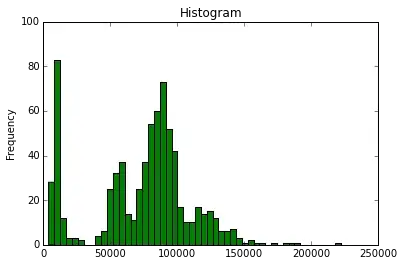This is mostly about understanding how hypothesis testing works. When we test a null hypothesis (here that the data come from a normally distributed population), we can either reject the null hypothesis, or fail to reject the null hypothesis. To understand this more better, it may help to read my answer here: Why do statisticians say a non-significant result means “you can't reject the null” as opposed to accepting the null hypothesis? So your statement that the
p-value is slightly larger than 0.05, which means it is normal distribution
is not correct. It is completely possible that $p > 0.05$ and the data do not come from a normal population.
Setting that aside, we can think about how to address the substantive issue of whether it is reasonable to conclude that a given dataset came from a normally distributed population (or whether the population distribution is close enough for your purposes). The first thing is always to think about what your data are. For example, your data seem to be piled up against 0. Is it possible for these numbers to be negative? If not, they cannot be normal by definition. The next step is to plot your data. Histograms are OK, but qq-plots are generally more recommended (cf., here). Hypothesis tests for distributions are generally not recommended (cf., here).
You can also ask yourself why you want to know if the data are normal; for what purpose is it important that they be? If it is to check off a box so that you can use a particular statistical test, it may not be as important as you think and/or it my be preferable to just use a test that doesn't rely on normality. (For more on that, it may help to read this thread: How to choose between t-test or non-parametric test e.g. Wilcoxon in small samples)
